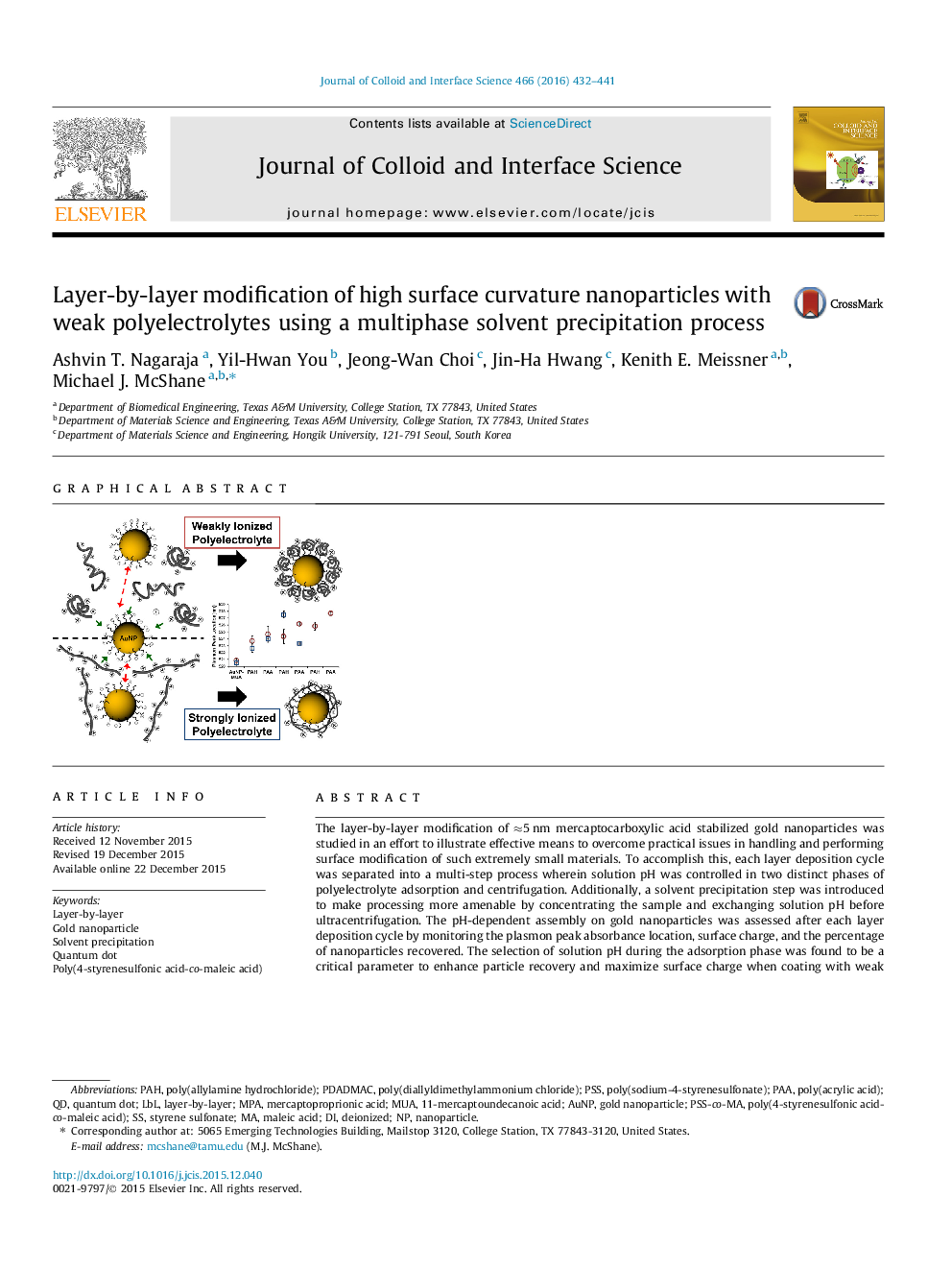| Article ID | Journal | Published Year | Pages | File Type |
|---|---|---|---|---|
| 606351 | Journal of Colloid and Interface Science | 2016 | 10 Pages |
The layer-by-layer modification of ≈5 nm mercaptocarboxylic acid stabilized gold nanoparticles was studied in an effort to illustrate effective means to overcome practical issues in handling and performing surface modification of such extremely small materials. To accomplish this, each layer deposition cycle was separated into a multi-step process wherein solution pH was controlled in two distinct phases of polyelectrolyte adsorption and centrifugation. Additionally, a solvent precipitation step was introduced to make processing more amenable by concentrating the sample and exchanging solution pH before ultracentrifugation. The pH-dependent assembly on gold nanoparticles was assessed after each layer deposition cycle by monitoring the plasmon peak absorbance location, surface charge, and the percentage of nanoparticles recovered. The selection of solution pH during the adsorption phase was found to be a critical parameter to enhance particle recovery and maximize surface charge when coating with weak polyelectrolytes. One bilayer was deposited with a high yield and the modified particles exhibited enhanced colloidal stability across a broad pH range and increased ionic strength. These findings support the adoption of this multi-step processing approach as an effective and generalizable approach to improve stability of high surface curvature particles.
Graphical abstractFigure optionsDownload full-size imageDownload high-quality image (181 K)Download as PowerPoint slide
